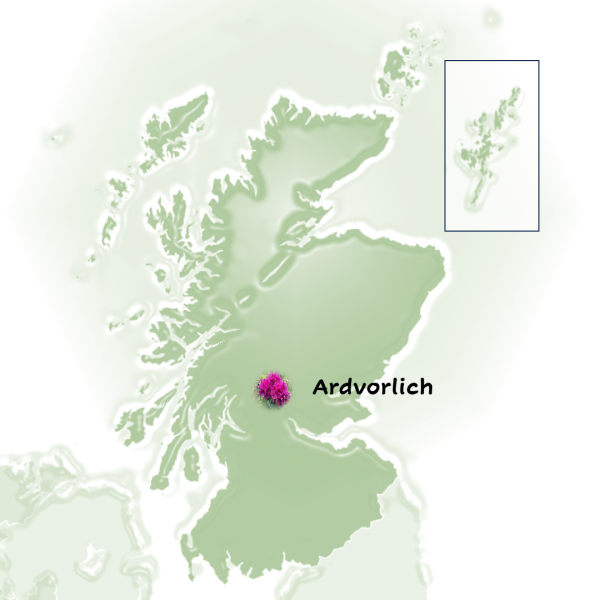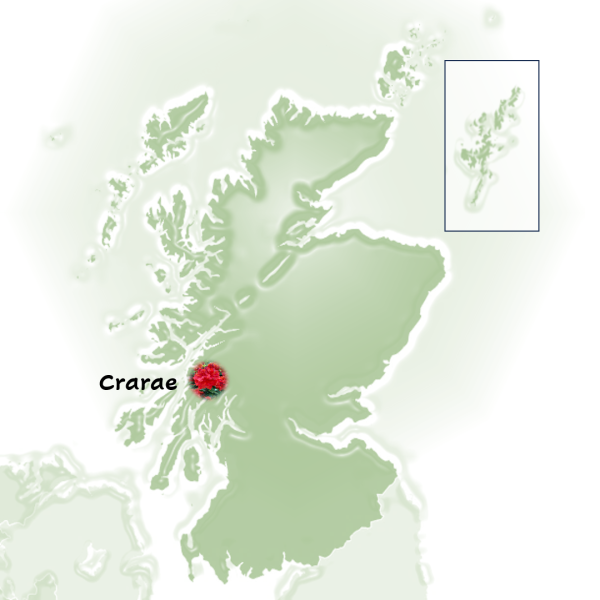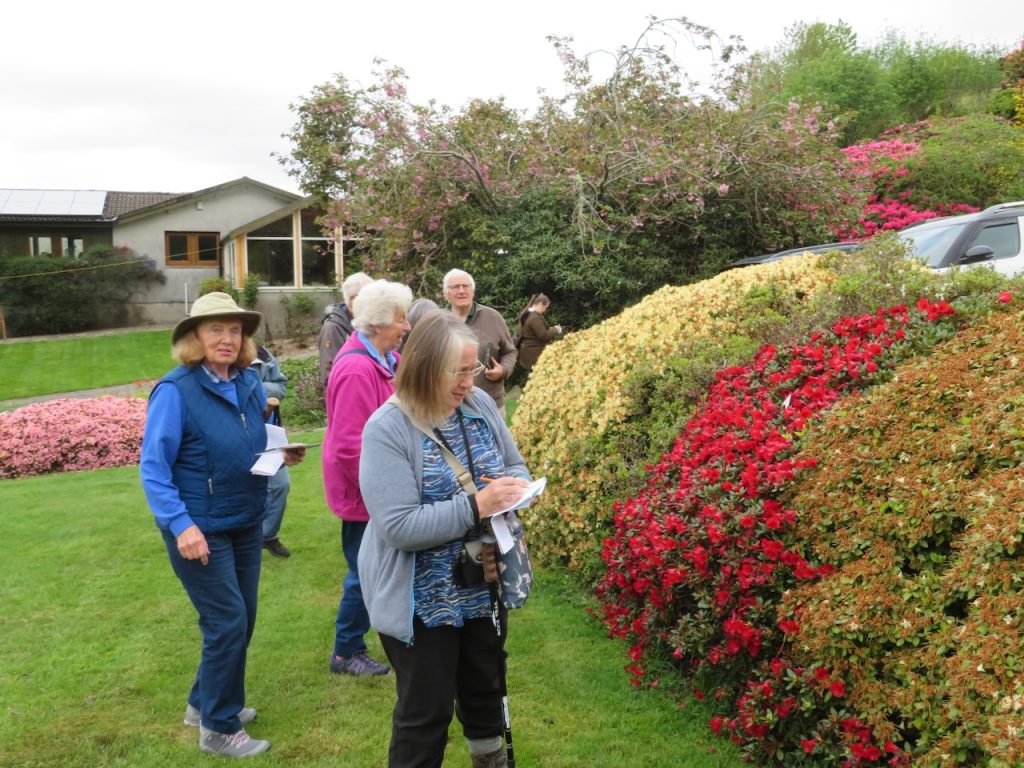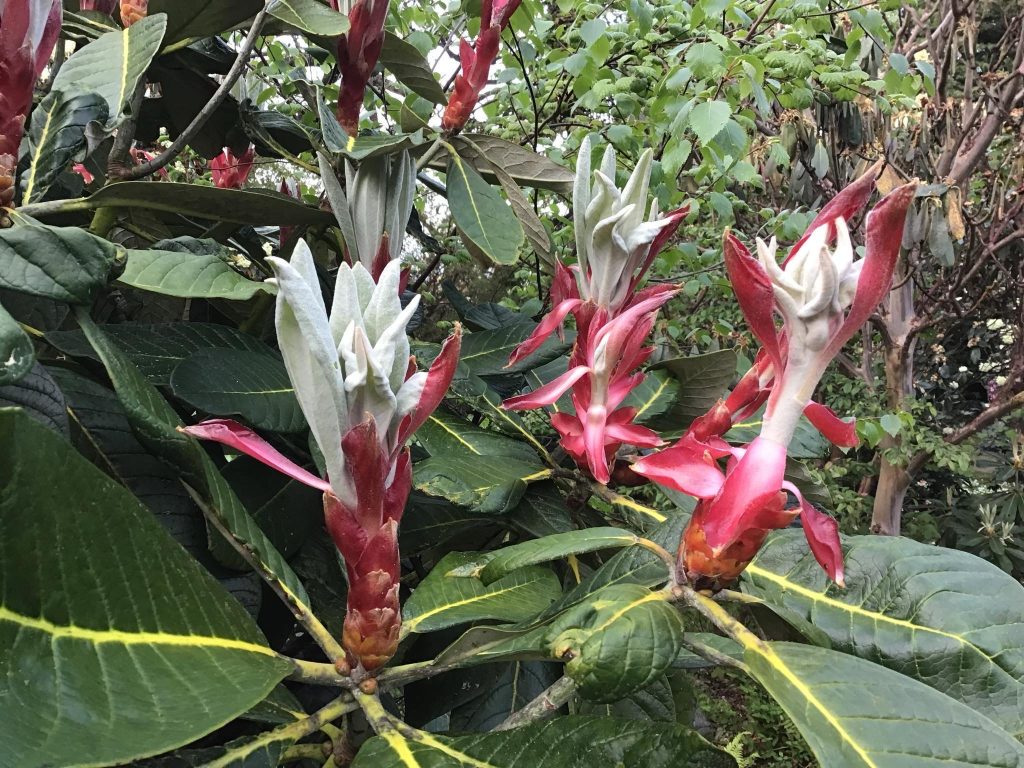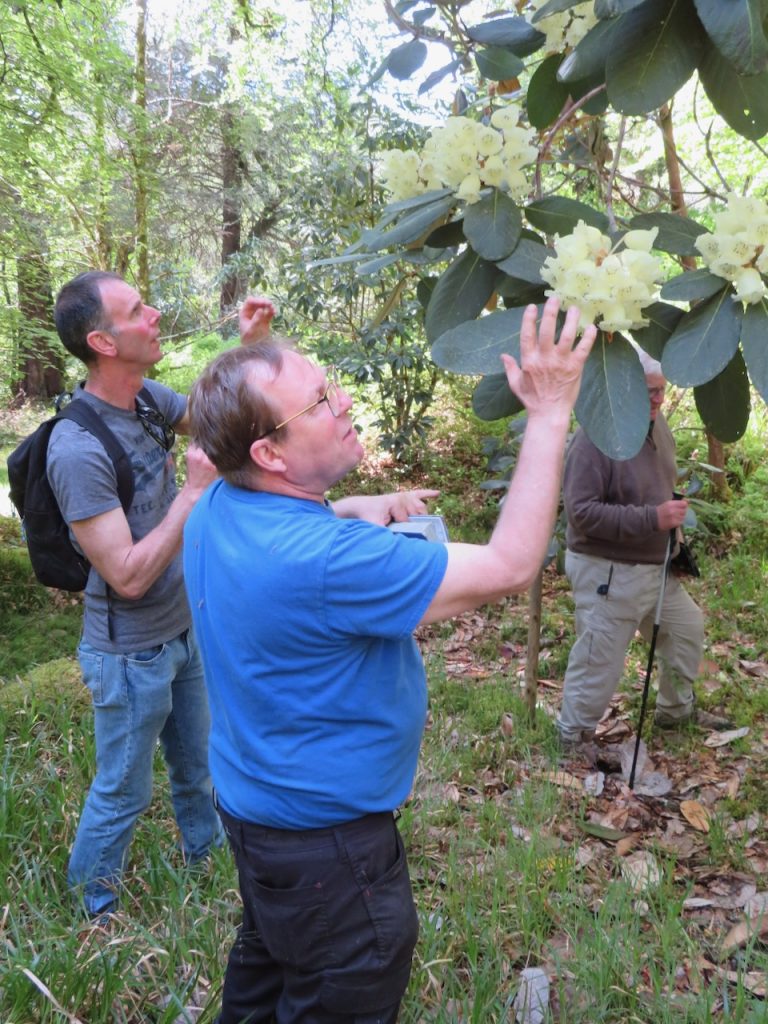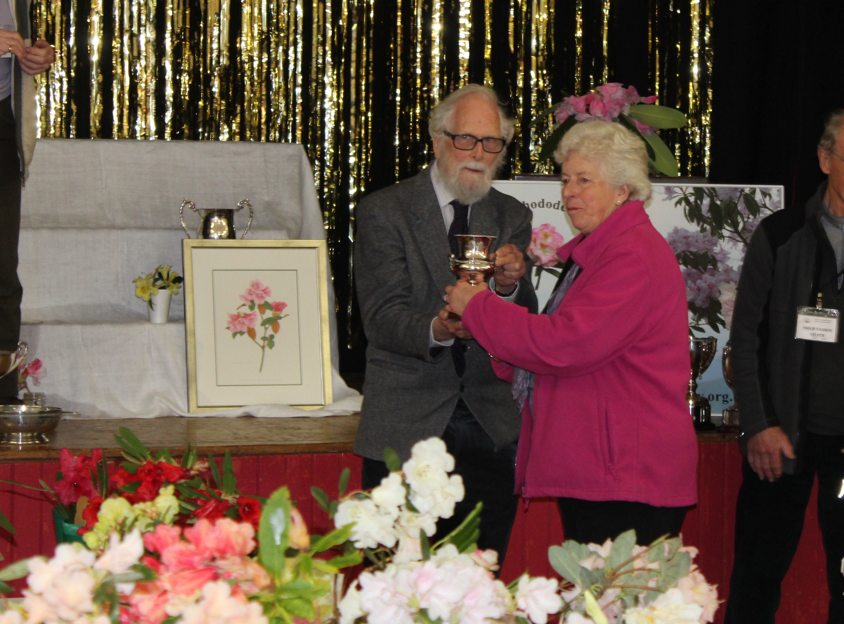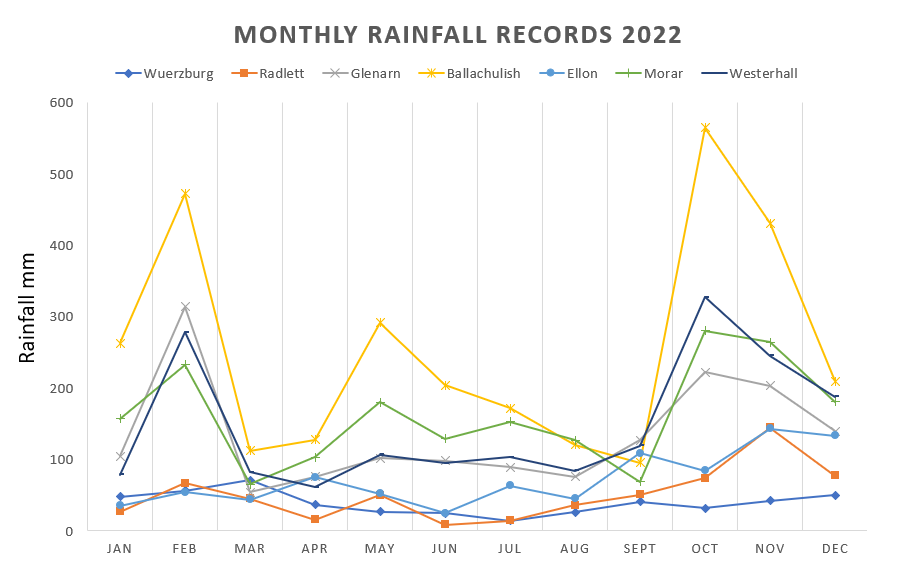An Introduction to Scotland’s Rhododendron Collections
The genus Rhododendron is exceptionally large with over 1000 species.
This results in great variety, from the smallest Alpine rhododendrons to impressive forest trees, all exhibiting different characteristics and features which make them so interesting (and eminently collectable). Their flower power is exceptional and a great majority can be grown in Scotland. They are found in parks and domestic gardens but also in larger gardens open to the public; beautiful displays and, most usefully, in those collections that are labelled, where names can be put to plants.
Scotland’s Rhododendron Treasures…
RBGE & Outstations
The Royal Botanic Garden Edinburgh is the world leader in the genus Rhododendron, with a library and herbarium and its comprehensively labelled collection, in Edinburgh. There are also extensive, fully labelled collections at the RBGE outstations: Dawyck, near Peebles, where rhododendrons suited to colder districts can be seen, at Logan Botanic Garden, on the Mull of Galloway, whose equitable climate allows the most tender rhododendrons to be grown and, in the west, Benmore near Dunoon, where the high rainfall and steep hillsides mimic conditions in the southeast Himalaya where rhododendrons are found in their natural habitats.
The influx of newly discovered rhododendrons in the first half of the 20th Century led to the creation of many woodland gardens, some of which have passed to the National Trust for Scotland whose notable and partly labelled collections can be visited. These include Crarae, south of Inverary, Arduaine on Loch Melfort, Brodick, across the water on Arran, and in the far north-west the famous Inverewe garden at Poolewe.
Argyll has been described as the “Promised Land” for rhododendrons and it is worth exploring many of the Glorious Gardens of Argyll and Bute, some of which have been described above, but also include a number of private gardens open to the public including Glenarn, near Helensburgh, with its well documented and labelled collection, and Ardkinglas at the head of Loch Fyne, which also boasts some of the tallest trees in the land. Another island for the more adventurous is Gigha and its garden Achamore. Nor should the east side of the country be ignored, with destinations such the Blackhills, near Elgin, an example of lightly managed rhododendrons. Between Perth and Dundee, Glendoick has a magnificent garden that defies the cold and low rainfall and is the home of the premier rhododendron nursery in Scotland.
Careful study of the Scotland’s Gardens Scheme Yellow Book will also throw up excellent rhododendron gardens, sometimes only open for a day for the charity, others for a longer period, including Corsock House, near Castle Douglas, with its famous Rhododendron lacteum. The beautiful Glenwhan Gardens, created over the last 40 years and open every day of the year, is close to Stranraer while further north at Ardvorlich, on Loch Earn, rhododendrons are planted informally, in woodland on the edge of a tumbling burn.
Finally, there are rhododendrons that are found not in garden settings but in the wider landscape. For instance, there is old and new planting at Glenbranter, between Benmore and Strachur, and the remote collection to be discovered at Corrour on the side of Loch Ossian, accessed at Corrour Halt from the train. The West Highland Line also can take enthusiasts to Arisaig where rhododendrons, planted in the 1920s and ’30s at Larachmhor, still grace the site along with some newer planting.
The most recent example of rhododendrons in a natural setting is at Baravalla, on West Loch Tarbert, which contains the important modern collection from Peter Cox and Sir Peter Hutchison’s plant hunting expeditions, well described in their book “Seeds of Adventure”
The Scottish Rhododendron Society organises visits and tours to many interesting gardens and plantings, some of which are private collections that are not easily accessible. It also holds the annual Scottish Rhododendron Show in late April or beginning of May where the named entries fill the hall with colour and when rhododendrons, species and hybrids, can be studied and enjoyed in detail.
To expand the suggested places described above the Scottish Rhododendron Society will be pleased to hear of any well labelled collection of rhododendrons in a garden open to the public at least once per year.
Written by Mike Thornley, Graphics & layout by Grant Moir, Photos as credited.














